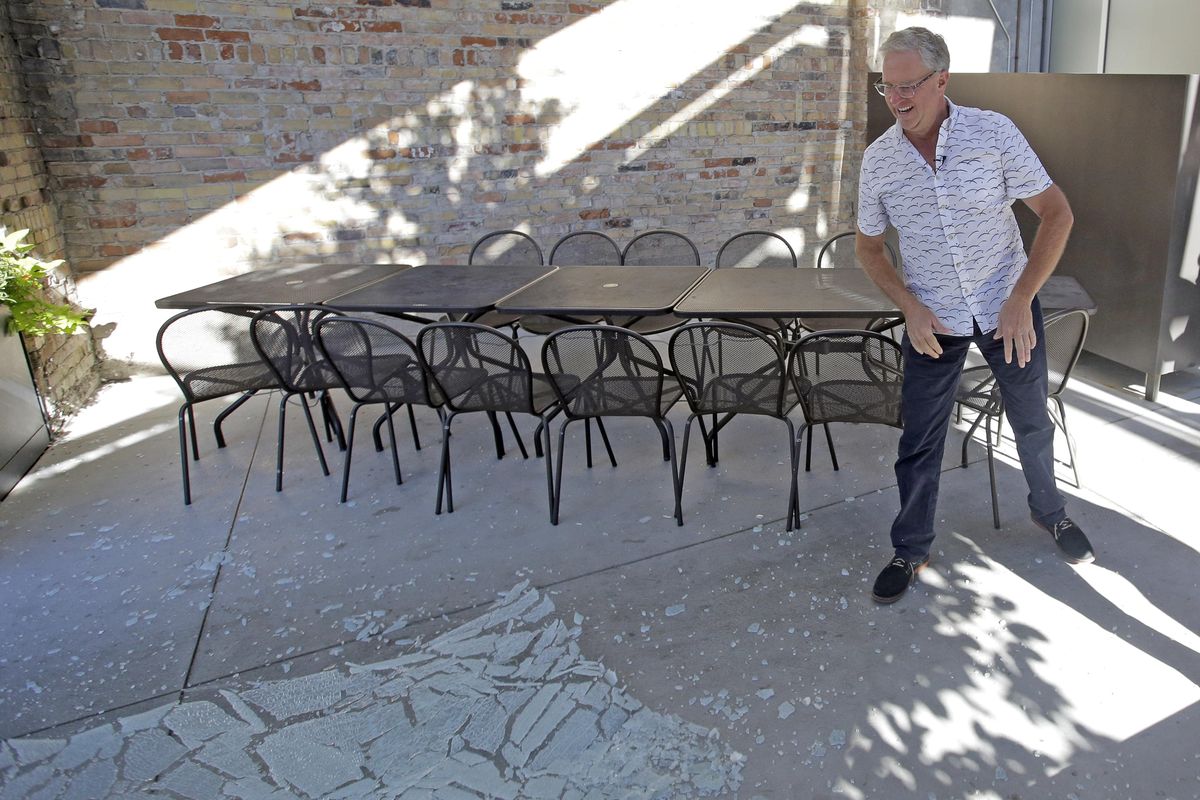Prices rise, partitions fall under new Utah liquor law

SALT LAKE CITY (AP) – A trendy downtown Salt Lake City seafood restaurant started business Saturday with glass-smashing and champagne, a symbolic gesture in its emancipation from Utah’s so-called “Zion Curtains” alcohol law.
“It feels fabulous and liberating. It’s a hallelujah moment,” said Joel LaSalle, owner of Current Fish & Oyster. “It’ll make our restaurant twice as beautiful because you can actually see the $100,000 bar and wall.”
The new liquor law went into effect Saturday, making wine, liquor and higher-alcohol beer more expensive while also allowing some restaurants to take down walls and partitions that were meant to prevent customers from seeing their alcoholic drinks being mixed and poured.
The broad liquor law passed in March eased a longtime requirement that drinks be prepared behind barriers known as “Zion Curtains,” typically glass walls or back rooms. It’s based on the premise that the barriers shield children from alcohol culture and the glamour of bartending, and prevents underage drinking.
The Zion Curtain nickname is a reference to The Church of Jesus Christ of Latter-day Saints, which teaches its members to avoid alcohol and plays an influential role in state liquor policy.
The rule has been a longtime thorn in the side of Utah’s restaurant industry, which has complained that the barriers can be ugly and awkward, and point out that children can still see customers drinking alcohol. They also argued the rule punished newer restaurants, because those built before 2009 were not required to have a barrier.
Under the new law, restaurants can stop hiding drinks behind glass barriers or in backrooms starting Saturday – if they choose one of two options to keep those under 21 away from bars: Seat them at least 10 feet from a bar, or at least 5 feet from a bar if the restaurant installs a half-wall or other structure about 3.5 feet tall.
Adult customers can sit at or near bars and watch drinks being made.
Restaurants that want to pick one of those paths will first need the alcohol control department to sign off on their changes and floor plans and meet with a compliance officer from the liquor department.
Terry Wood, spokesman for Utah Department of Alcoholic Beverage Control, did not know how many restaurants had taken steps to make those changes, but it was expected to be a small number.
Most restaurants are not required to do anything differently under the law, and eateries that must make adjustments have a year to do that.
The large dining room at Current Fish & Oyster offers plenty of room for a 10-foot buffer zone. LaSalle said that the wall is an eyesore and costs his restaurant thousands in sales each month because customers can’t sit and enjoy a drink while chatting with the bartender hidden in a glass-paneled cubicle.
The law also raised the markup that the state makes on the case price of alcohol by 2 percentage points. Starting Saturday, the price markup will be 88 percent for liquor and wine and 66.5 for beer that has more than 4 percent of alcohol by volume.
After closing time Friday, workers went through the state’s 44-state-run liquor stores to post new price tags on store shelves ahead of Saturday’s openings.
The rising markup will generally cause retail prices to increase about 1 percent. For example, a $19.99 bottle of wine would cost $20.20 on Saturday.
The price increases don’t apply to lower-alcohol beer, which is sold in grocery and convenience stores.
Some of the law’s other changes took effect in May, including rules allowing alcohol to be sold an hour earlier – at 10:30 a.m. – on weekends and holidays.